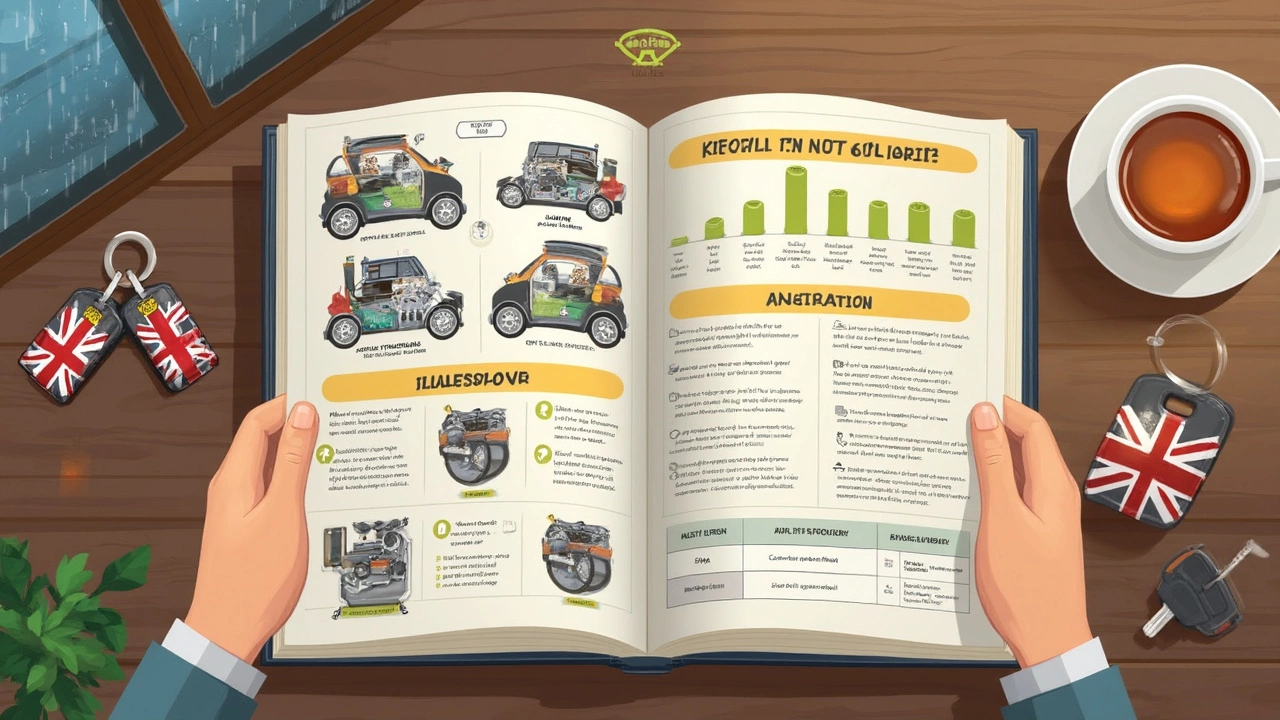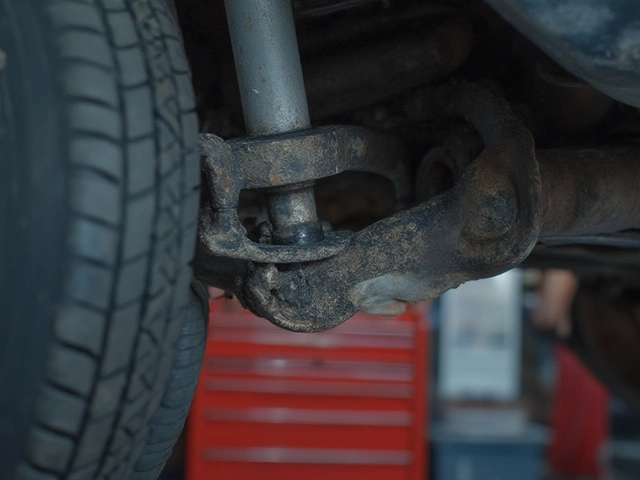You pop the hood to top up your oil, and all you see is a jumble of numbers and letters on the shelves. 5W-30, 10W-40, synthetic, high-mileage—it can make your head spin. Trust me, I’ve stood in that same aisle texting my dad before. But choosing the right oil isn’t rocket science once you know what to look for.
Your engine’s life depends on using the right stuff. The wrong oil can make it noisy, less efficient, and lead to expensive repairs. But figuring out the right one for your car isn’t about guessing—it’s all spelled out in your owner’s manual and sometimes on the oil cap. Just crack open that glove box, find the book (or search for it online if your kid spilled juice on the original like mine did), and look for a section about oil specs or “lubrication.” You’ll find a recommendation like '5W-30' and maybe a note about preferred brands or synthetic blends.
- Why Engine Oil Matters
- Where to Find Your Oil Specs
- Breaking Down Oil Labels
- Synthetic, Conventional, or Blend?
- Common Oil Mistakes (And How to Dodge Them)
- Tips for Stress-Free Oil Shopping
Why Engine Oil Matters
If you want your engine to last, engine oil is non-negotiable. Think of it as the lifeblood of your car—it keeps everything running smooth and keeps nasty surprises away. Your engine’s metal parts move fast and get hot. Without oil, they’d just grind together, overheat, and tear themselves apart.
Here’s exactly what engine oil does under your hood:
- Lubricates – Stops all those metal bits from rubbing and wearing out fast.
- Cools – Helps pull heat away, so nothing melts or warps.
- Cleans – Picks up gunk and nasty carbon buildup before it can mess things up.
- Protects – Coats parts so they don’t rust or corrode.
- Seals – Keeps engine pressure stable so you don’t lose power and efficiency.
Now, here’s some real-world proof of how key good engine oil is. A big-name auto service chain showed engines that went too long without oil changes. They were loaded with sludge—like something out of a horror movie. The cars needed either expensive engine cleanups or a new engine altogether, just because of skipping simple oil changes.
Modern engines are a bit pickier than old-school ones. Even using a thicker oil than required can knock a few miles per gallon off your fuel economy or throw a check-engine light. Mess with the wrong oil in newer engines, and you risk voiding your warranty, too.
Here’s a quick look at how engine breakdown happens without proper oil:
| Engine Oil Status | Effect on Engine |
|---|---|
| Fresh & correct oil | Optimal performance, less wear and tear |
| Low or old oil | More friction, higher temps, risk of damage |
| No oil at all | Engine quickly seizes—game over |
The bottom line? Choosing the right engine oil isn’t just something for car geeks or gearheads. It saves you money, headaches, and even your whole engine down the road.
Where to Find Your Oil Specs
Finding your car's exact engine oil specs is easier than most people think, and you don’t need to be super-savvy with cars. The first and best spot to check is always your owner’s manual. This little book (usually hiding in your glove compartment) will list things like recommended oil type and viscosity—words like 5W-30 or 10W-40 will jump out at you.
If the manual's missing, don’t panic. A quick Google search with your make, model, and year plus the phrase “engine oil” usually points right to a PDF version or a trustworthy maintenance site. Most manufacturer websites even have maintenance sections with oil info. Don’t go just by what a random forum says—stick to the official channels at least to get the basics right.
- Check the oil cap: Sometimes, the recommended oil type is printed right there.
- Look for a sticker under the hood: Shops often put reminders there after an oil change (they’ll jot down viscosity or the oil brand).
According to the American Automobile Association (AAA), “using the viscosity grade and oil type of the manufacturer’s specifications is the most important step in ensuring your engine keeps running smoothly.”
"Following the manufacturer’s recommended oil requirements is one of the simplest ways to maximize vehicle longevity and reliability." – AAA Car Care Experts
If you drive an older car or a specialty vehicle, don’t assume “close enough” is good enough—manufacturers are picky about oil requirements for good reason. Fun stat: a Cars.com 2023 survey found that 36% of engine problems from DIY oil changes came from using the wrong oil.
Stick to what's recommended, and your car will thank you (and save you a pile of cash in the long run).
Breaking Down Oil Labels
Standing in front of all those bottles of engine oil, you’ve probably wondered what the heck “5W-30” even means. It's not some secret code—these numbers (and that letter "W") are all about viscosity, which is just a fancy way of saying how thick the oil is at certain temperatures. When you see “5W-30,” that first number before the W stands for how well the oil flows in winter (W literally means “winter”), while the second number is how thick it gets when your engine is nice and hot.
So, 5W-30 keeps things moving smoothly at colder starts and stays thin enough not to bog down the engine when it heats up. If you live up north or your car faces chilly mornings, your owner’s manual probably says to stick with a lower first number. In hotter places, a bigger second number means better protection when the engine’s working its hardest.
Take a look at this for comparison:
| Oil Type | Cold Start (W) | Hot Temp | Typical Use |
|---|---|---|---|
| 5W-30 | 5 (very good) | 30 (medium) | Most cars, mixed temps |
| 10W-40 | 10 (fair) | 40 (thicker) | Older engines, hotter areas |
Bottle labels also shout about whether the oil is synthetic, a blend, or conventional. Synthetics are made to handle heat and engine stress, while conventional is classic and cheaper—but doesn’t last as long. Look for terms like “high mileage” if you’ve hit over 75,000 miles, or “full synthetic” if your car’s turbocharged or you just want the best protection.
Quick tip: Don’t get distracted by marketing buzzwords that don’t match what your engine actually wants. The American Petroleum Institute (API) rates oil for quality—so if you spot the API starburst on the label, you know it meets the right standards.
“Choosing the correct oil viscosity for your vehicle is one of the simplest ways to make your engine last. Always stick to what your manufacturer recommends.” — Mark Holthoff, editor at Car and Driver
Long story short, the numbers and words on those oil bottles tell you everything you need to know—just match them up with your manual before you pour. When in doubt, look for the API and manufacturer’s marks, and always double check you’re grabbing the oil type that fits your needs.

Synthetic, Conventional, or Blend?
This is the part where a lot of people get tripped up at the auto parts store. You’re staring at rows of engine oil and they’re split into three main types: synthetic, conventional, and synthetic blend. So which one’s actually right for you?
Here’s the basic breakdown:
- Synthetic oil: Made in a lab, these oils are designed to flow better when it’s freezing and protect better when it’s hot. They also handle long stretches between oil changes. If you’ve got a newer car, turbo engine, or do a lot of short trips and heavy hauling, synthetic is usually the safe bet. In fact, about 70% of new cars now recommend synthetic or a synthetic blend from day one.
- Conventional oil: This is the old-school stuff, refined right from crude oil. It’s usually cheaper, and plenty of older vehicles run just fine on it. But you’ll need to change it more often (sometimes as soon as 3,000 miles). It breaks down faster under heat and stress. If your manual doesn’t specifically call for synthetic, and your car’s not high-performance, this can still be all you need.
- Synthetic blend: A mix of both. You get some improved protection without paying full synthetic prices. These blends are great if you want a little more peace of mind, especially with high-mileage engines or if you’re driving in extreme cold or heat.
To get an idea of how they stack up, check out this comparison:
| Oil Type | Typical Change Interval | Protection Level | Cost |
|---|---|---|---|
| Synthetic | 7,500 - 10,000 miles | Excellent, especially for high and low temps | High |
| Conventional | 3,000 - 5,000 miles | Basic, fine for older/simple cars | Low |
| Synthetic Blend | 5,000 - 7,500 miles | Better than conventional, not as strong as synthetic | Medium |
The truth? Most people are fine going with what their manual says. Don’t overspend if you don’t need to, but don’t cheap out and gamble on engine repairs. Using the right oil type for your car maintenance really does make a difference.
Common Oil Mistakes (And How to Dodge Them)
Let’s talk about the classic slip-ups people make with engine oil. Some look harmless, but they can really mess up your ride or cost you more at the next visit to the mechanic.
- Guessing instead of checking the manual: The number one mistake? Grabbing whatever oil is on sale instead of the right type or viscosity. Your car’s manual tells you exactly what you need. Skip it, and your engine may run hotter or wear out faster.
- Mixing oil types: Pouring in synthetic when you already have regular (or vice versa) isn’t great. While one top-off won’t explode your engine, it can mess with the oil’s ability to protect against wear and handle temperature swings. Always stick to one type between oil changes.
- Overfilling the oil: More isn’t better. Too much oil can actually hurt your engine, causing leaks, burning smells, or even damage to the catalytic converter. Always use the dipstick to double-check your level after pouring oil in.
- Ignoring oil change intervals: Life gets busy, but stretching your oil change way past the recommended mileage is risky. Old oil breaks down and can turn into sludge, which cuts lubrication and damages moving parts.
- Misreading oil labels: Not all 5W-30s are the same. Cheap brands sometimes don’t meet carmaker specs, which can mess with performance. Look for the service grade (like "API SP") and make sure it matches your manual.
- Assuming “high mileage” oil is always necessary: Your odometer hitting 100,000 doesn’t mean you have to switch. Only use high-mileage oil if your engine is showing signs like leaks or burning oil—otherwise, stick with what works.
Just to give you an idea, here’s some data I came across from a car care report:
| Oil Mistake | % of Drivers Who Made It (2023) |
|---|---|
| Skipped oil change over 2,000 miles | 42% |
| Used wrong viscosity | 28% |
| Overfilled engine oil | 19% |
| Mixed synthetic with conventional | 25% |
Seeing those numbers, you’re not alone if you’ve slipped up before. The thing is, fixing oil mistakes is usually cheap compared to the damage they can cause. Your best move? Double-check your oil type and change interval in the manual, and actually read those labels in the store. Spend a few extra minutes now so you don’t spend hundreds later.
Tips for Stress-Free Oil Shopping
Walking into the auto aisle or scrolling through oil choices online can feel like picking a cereal—you’re hit with a hundred options that all look the same. Here’s how to take the guesswork out of it and make buying engine oil stress-free every single time.
- Know your specs before you leave the house. Jot down your car’s oil type—like 5W-30 or 0W-20—on your phone or a sticky note. Nearly 90% of oil mix-ups happen because someone guessed instead of checking their manual.
- Stick with trusted brands. If your manual says to use a certain brand, go with it. Otherwise, stick with names that are recognized in the market, like Mobil 1, Castrol, or Pennzoil. Cheap off-brand oil sometimes skips key additives.
- Decide on conventional vs. synthetic before you shop. Synthetics cost more but protect better in extreme heat/cold, handle longer intervals, and improve fuel efficiency. Conventional oil is just fine for older, low-mileage cars driven in mild conditions. Your manual usually lists both options, so pick what fits your needs.
- Look for deals and combo packs. Auto stores often bundle oil with filters at a discount. An oil change always goes smoother when you have the right filter on hand, too.
- Avoid confusing labels—stick to the numbers you need. Ignore terms like "high mileage" unless your car has over 75,000 miles. For most cars, the numbers (like 5W-30) and API certifications on the label are what really matter.
- Never mix random oils. Mixing different viscosities or brands isn’t a great idea and can affect performance. Use up the same type before topping up or switching.
| Oil Type | Best For | Main Benefit |
|---|---|---|
| Conventional | Older cars, low mileage | Lower price, decent for short intervals |
| Synthetic | Newer engines, extreme temps | Longer life, better protection |
| Synthetic Blend | Mixed driving conditions | Mid-price, some benefits of synthetic |
| High Mileage | Over 75,000 miles | Extra protection for aging seals |
One more underrated tip? Snap a photo of your old oil jug and filter after an oil change. That way, when you’re standing in the aisle six months later, you know exactly what you used last time. This move has saved me more than once when I couldn’t remember if my car needed 0W-20 or 5W-30.
Shopping for engine oil doesn’t have to be a brain-buster. Stick to your specs, buy quality, and make your life easier next time by keeping notes or old packaging. That’s the secret to easy, mistake-free oil changes.






